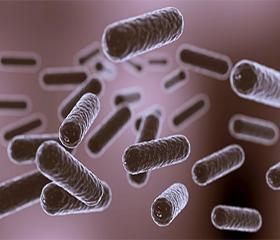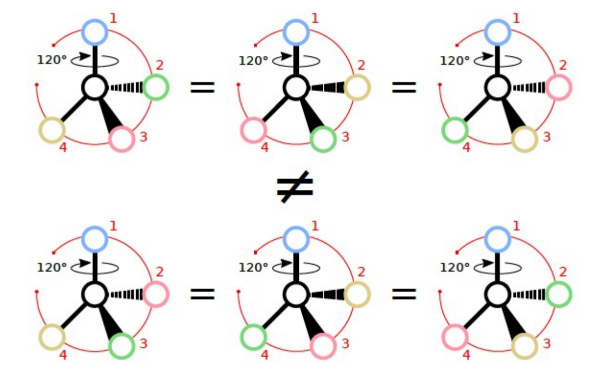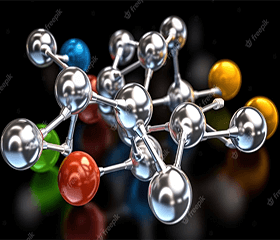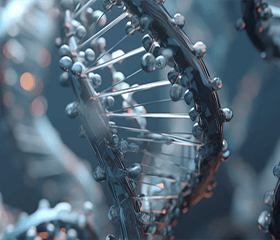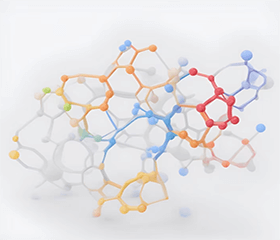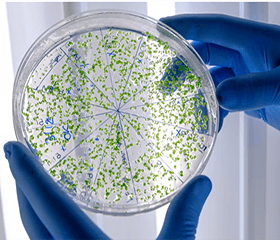The hedgehog signaling pathway is a mechanism that directs the development of embryonic cells in animals, from invertebrates to vertebrates. The hedgehog signaling pathway was first discovered in Drosophila by Wieschaus and Nüsslein‐Vollhard in the early 1980s. The pathway takes its name from its polypeptide ligand, an intracellular signaling molecule called Hedgehog (Hh) found in fruit flies of the genus Drosophila; fruit fly larva lacking the Hh gene are said to resemble hedgehogs. Hh is one of Drosophila's segment polarity gene products, involved in establishing the basis of the fly body plan. The analogous proteins in mammals were termed Sonic hedgehog (Shh), after the popular video game hero, and Indian hedgehog (Ihh) and Desert hedgehog (Dhh), the latter two after existing species of living hedgehogs.

The interactions of the components of the Hh pathway occur in the primary cilia of cells. Newly generated Hh proteins are subjected to post-translational modification. The N-terminal signal sequence is first removed, the C-terminal glycine is covalently modified with cholesterol and the N-terminal residue is palmitoylated to produce the mature Hh protein. The binding of the mature Hh protein to the membrane receptor Patched (Ptc) releases its inhibitory effect on Smoothened (Smo). The binding of Hh protein to Ptch causes Smo, stored in intracellular vesicles, to move to the cilium and activate signal transduction. Active Smo then signals via a cytosolic complex of proteins including Suppressor of Fused (SuFu), and the cascade culminates by triggering activation of the glioma (Gli) family of transcription factors and their translocation to the nucleus. This activation results in the expression of specific genes that promote cell proliferation and differentiation.
The Hh pathway is a key regulator of patterning, growth, and cell migration during embryonic development, and inhibition of the Hh pathway at this stage has been shown to cause severe birth defects such as cyclopia. In adult organisms, the Hh pathway contributes to homeostasis and regeneration of certain tissues such as skin and bone, but aberrant activation of the Hh pathway has been linked to tumorigenesis in several cancers. Interests in targeting this pathway for the treatment of cancer have arisen from recent evidence that Hh signaling is important for driving the self‐renewal of cancer stem cells, a small subset of cells in a tumor that are able to initiate tumor spread and which are typically resistant to chemotherapy, possibly contributing to relapse. In the last few years, cross‐talk during carcinogenesis has also been established between the Hh signaling pathway and several other key molecular signaling pathways such as Wnt, p53, and growth factors, which will have implications for the treatment of Hh‐dependent cancer.
The most common way to target this pathway is to modulate Smo. Antagonist and agonist of Smo have already shown to affect the pathway regulation downstream. Many small-molecule Hh pathway inhibitors under clinical investigation target Smo. Cyclopamine, a steroidal alkaloid that was isolated as a teratogen from Veratrum californicum, was reported as one of the first inhibitors of the Hh signaling pathway, along with cycloposine and jervine. It was later established that cyclopamine achieves this inhibition by direct binding to the seven‐transmembrane α‐helical bundle of the Smoothened receptor. Cyclopamine is highly insoluble in water and unstable in acidic media, leading to the production of inactive or less potent antagonists. Because of this, 3-keto, N-aminoethyl aminocaproyl dihydrocinnamoyl cyclopamine (KAAD-cyclopamine) were developed which showed higher potency than cyclopamine. KAAD-cyclopamine exhibited selectively antiproliferative activity against a panel of hepatocellular carcinoma cell lines where Hh signaling is activated. Cyclopamine and KAAD-cyclopamine act downstream of Ptch1, and activity at the Smo level in the pathway was confirmed by photo-affinity labeling experiments. Several other Smo inhibitors were synthesized and studied including Cur61414, HhAntag, GDC‐0449, IPI‐269609, IPI-926, LDE225, SAG, TAK-441, etc. On the other hand, Smo inhibitors harmful and potentially toxic side-effects of SMO inhibitors, undetermined safety in children, and the evidence that some patients develop resistance to SMO inhibitors.

A small-molecule microarray-based screen of an Shh N-terminal fragment and subsequent structure-activity relationship effort for the primary hit led to the identification of robotnikinin. The compound binds to ShhN and inhibits Hh signaling in a Gli–luciferase reporter gene assay in human primary keratinocytes, and in a synthetic model of the human skin in a dose‐dependent fashion. Robotnikinin is able to inhibit Shh pathway activity in both mouse and human-derived cells upstream of Smo. In a Ptch1−/−MEFcell line with both Ptch1 alleles replaced with a LacZ reporter gene, no pathway inhibition was observed using robotnikinin. Two low‐molecular‐weight compounds, GANT58 and GANT61 were identified to act at the nucleus to block Gli function, and one of them, GANT61, interferes with DNA binding of Gli1. Both compounds display selectivity for the Hh pathway over several unrelated signal‐transduction pathways such as TNF/NFκN signaling, glucocorticoid receptor gene transactivation, and the Ras‐Raf‐Mek‐Mapk cascade.
Several natural products were identified as Hh inhibitors through a cell-based reporter assay of Gli1-mediated transcription. Overexpression of GLI1 has been described in multiple tumor types such as rhabdomyosarcoma, prostate, biliary, breast, lung, colon, and bladder cancer. Among them, physalins F and B are the most potently inhibiting Gli1‐mediated activity. Additionally, these two compounds also decreased Gli2‐mediated transcription in a separate cell assay. Researchers proposed that Hh pathway inhibition of the physalins F and B might be attributed to PKC inhibition because these compounds showed inhibitory activity on PMA-induced NF-κB activation. However, the molecular target(s) of these natural products has not yet been elucidated. Several flavonoids of natural origin also showed Hh inhibitory activity. Seventeen steroidal Hh inhibitors were identified from Adenium obesum. Recently, some botanical natural products were reported as Hh inhibitors, including genistein, curcumin, resveratrol, and EGCG.
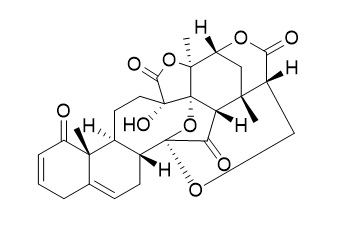
Arsenic trioxide (ATO) is the only GLI antagonist approved by the FDA for the treatment of acute promyelocytic leukemia. Mechanistically, ATO binds directly to GLI1 protein and inhibits its transcriptional activity, although structural details of this interaction have not been elucidated yet. ATO has been also found to reduce the stability of GLI2 transcription factor, preventing its accumulation in the primary cilium in response to Shh signaling. ATO has been also shown to increase apoptosis, reduce tumor cell growth, and decrease expression of Shh target genes in acute promyelocytic leukemia, osteosarcoma, malignant pleural mesothelioma, rhabdosarcoma, prostate, and colon cancer cell lines and xenograft models. ATO is currently in several clinical trials ranging from Phase I to Phase IV for both solid tumors and hematological malignancies, also used in combination with chemo- and radio-therapy.
Several environmental modifiers of Hedgehog signaling have been identified, which are potential health or developmental hazards. Dietary alkaloids found in tomatoes (tomatodine), potatoes (solanidine), nightshades like peppers, and eggplant (solasodine). and turmeric (curcumin) have been shown to antagonize SMO and perturb Hedgehog signaling. In addition, certain environmental toxicants can block Hedgehog signaling. Piperonyl butoxide (PBO) is a semisynthetic pesticide additive developed in the 1940s, which can be found in thousands of household and agricultural products. Despite its widespread use, the ability of PBO to inhibit hedgehog signaling and act as a potent developmental teratogen was not recognized until recently.
In recent years, the Hh signaling pathway has proven to be an essential key player in tumor initiation and/or progression to more advanced tumor stages. Numerous SMO inhibitors are currently on the market of which several are under clinical investigation. Initially, SMO inhibitors seemed to be very efficient in ligand-independent tumor types. On the other hand, the effect of SMO inhibitors in other (ligand-dependent) types of cancer seems to be relatively limited, highlighting the importance of identifying new target sites. Greater potentiality is held by GLI antagonists that target the final and most powerful effectors of the Hh signaling cascade. The chemistry of downstream Hh inhibitors inspired by natural products is currently studied for drug development. It is believed that all of these efforts will lead to potent new anti-cancer therapeutics, and inhibitors of the Hh signaling pathway will become powerful weapons to combat cancer in the near future.


